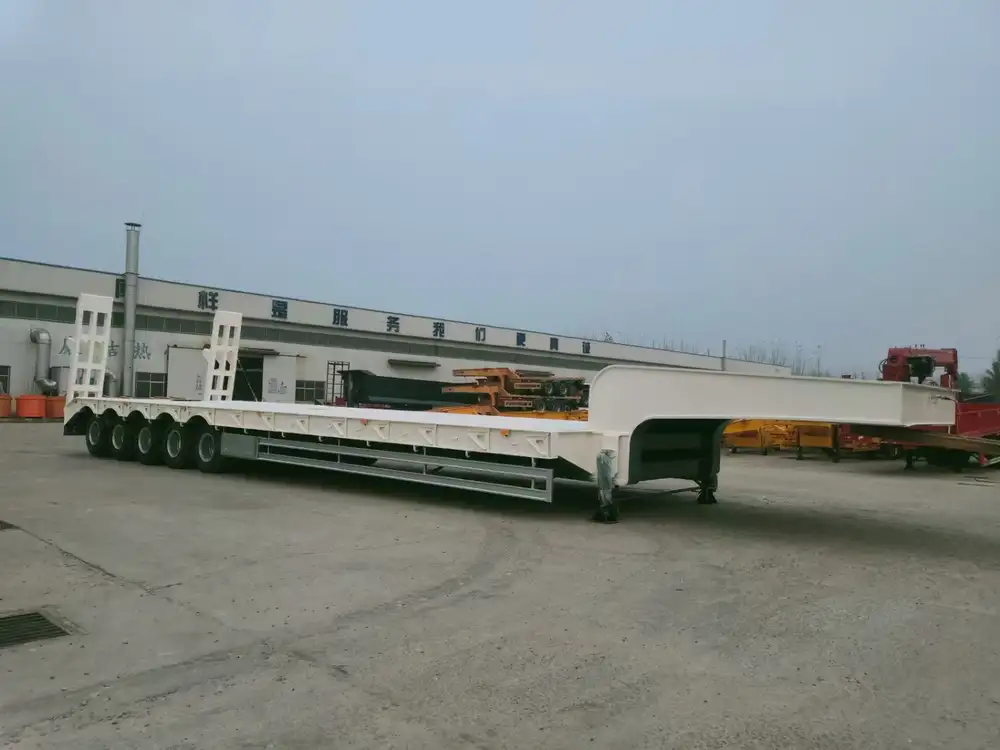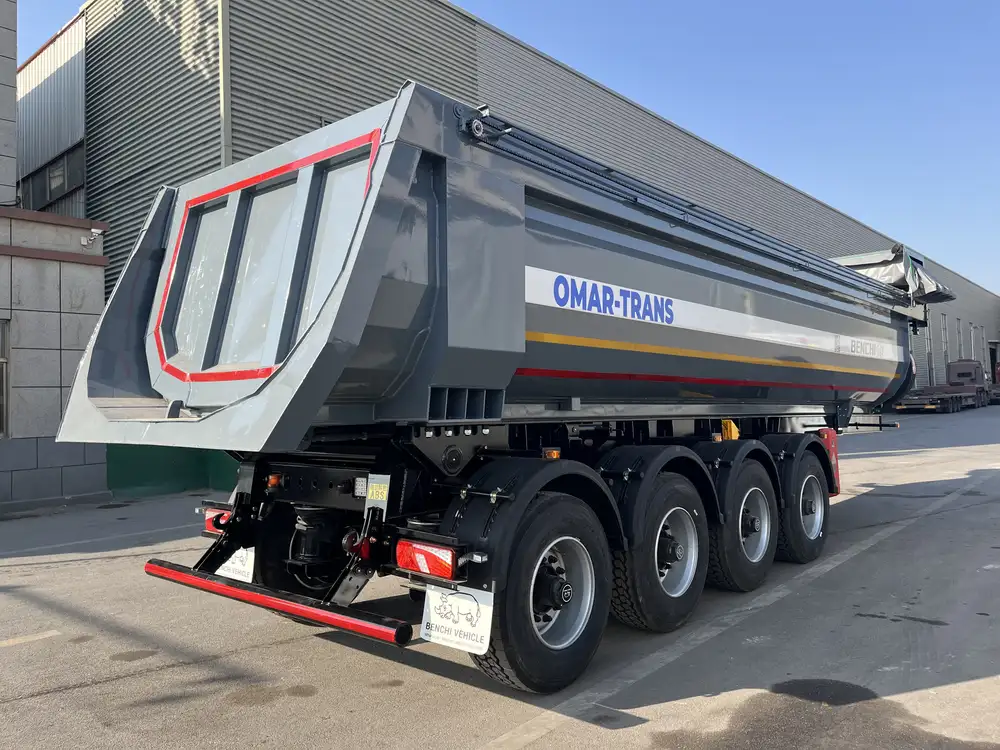When it comes to transportation and logistics, having a clear understanding of equipment specifications is critical. Today, we dive deep into a topic that often raises questions among trucking professionals and enthusiasts alike: the height of gooseneck trailer flatbeds relative to the ground.
What Is a Gooseneck Trailer?
Gooseneck trailers are specially designed for heavy-duty hauling and are characterized by their unique hitching system, which attaches to the bed of a pickup truck or a specialized towing vehicle. This design enables a more stable connection, resulting in improved maneuverability and weight distribution.
Key Features of Gooseneck Trailers
- Enhanced Stability: The gooseneck hitch provides a low center of gravity, reducing the likelihood of swaying or tipping.
- Versatile Payload Options: Available in various configurations and lengths, these trailers can accommodate a wide range of loads, including heavy machinery and vehicles.
- Increased Towing Capacity: The gooseneck design allows substantial towing capacity, typically exceeding that of bumper-pull trailers.
- Optimal Weight Distribution: The positioning of the gooseneck hitch allows for a more balanced load, preventing excessive strain on the towing vehicle.

The Importance of Height in Gooseneck Trailers
Understanding the flatbed height of a gooseneck trailer is crucial for several reasons:
- Load Clearance and Compatibility: Ensuring that the height is compatible with the load being transported and the vehicles or structures it may encounter.
- Towing Vehicle Specifications: Matching the height to the towing vehicle’s design and capabilities to maintain safety and efficiency.
- Regulatory Considerations: Complying with transportation regulations that may dictate specific height restrictions.
Standard Heights for Gooseneck Flatbed Trailers
The height of gooseneck flatbed trailers can vary significantly based on several factors, including:
- Type of Trailer: The configuration (e.g., single axle, tandem axle) can affect the overall height.
- Load Type: Some trailers are designed for specific load types (low profile vs. standard height) which impacts how tall the flatbed sits off the ground.
General Height Ranges
| Trailer Type | Height from Ground (inches) |
|---|---|
| Standard Flatbed | 38 to 42 |
| Low-Profile | 26 to 30 |
| Deckover | 32 to 36 |
While these measurements provide a general idea, it’s essential to check the specifications of individual models.

Factors Influencing Trailer Height
1. Tire Size
Larger tires raise the trailer’s height. Common options for gooseneck trailers include 15-inch to 22.5-inch tires. More substantial tires are often chosen for better durability and load-bearing capacity.
2. Load Configuration
Heavy equipment and machinery may require additional clearance. Factors such as load type, height, and distribution will dictate modifications necessary for the optimal height.

3. Suspension Type
Gooseneck trailers often use different suspension systems that can affect the ride height:
- Leaf Spring Suspension: Common in standard trailers, this provides a more rigid height.
- Air Suspension: Offers adjustable height capabilities, allowing versatility depending on load and road conditions.
4. Manufacturer Specifications
Each manufacturer has specified heights based on their design. It’s essential to consult the manufacturer’s guidelines for precise measurements.
Calculating the Required Height for Your Needs

Step-by-Step Height Assessment
- Identify Your Load: Measure the height and weight of what you plan to transport.
- Choose Your Trailer: Select a trailer type suited for your payload.
- Measure Towing Vehicle: Check the height of your truck bed when the trailer is attached. This includes accounting for any uneven terrain.
- Load Distribution: Ensure the load sits evenly to prevent excessive droop in height.
Example Calculation
Assume you want to transport a load that is 7 feet tall, with a vehicle that has a bed height of 3 feet. The total height you need is approximately 10 feet. If your gooseneck flatbed is 3 feet in height, you’re at 9 feet combined with the load. You may need a low-profile trailer or an adjustable suspension.
Safety Considerations

The Risks of Incorrect Height
Choosing a trailer with the incorrect height can lead to several issues:
- Increased Drag: Too high may create wind resistance, affecting fuel efficiency.
- Legal Penalties: Over-height loads can lead to fines and delays from regulatory inspections.
- Damage to the Load: Height discrepancies can cause loads to shift, damaging cargo or the trailer itself.
Best Practices for Height Management
- Pre-trip Inspections: Always verify the height before leaving for transport.
- Use Height Stickers: Affix easily visible height markers to keep track of necessary measurements.
- Check Local Regulations: Be aware of height restrictions on your route to avoid obstacles.
Adaptations and Adjustments
As loads and requirements change, so too must the approach to trailer height. The following adaptations can enhance performance:
- Adjustable Hitches: Consider investing in hitches that allow height modifications based on load needs.
- Custom Height Modifications: Work with manufacturers to customize trailers if necessary for specific height requirements.
- Proper Maintenance: Regularly inspect tires and suspension components to maintain intended height and ensure safety.

Frequently Asked Questions (FAQ)
What is the Average Height of a Gooseneck Trailer?
The average height of a standard gooseneck flatbed trailer is typically between 38 to 42 inches from the ground.
How Does the Height of a Gooseneck Affect Towing?
A higher trailer may increase the center of gravity, making it more prone to swaying. It’s essential to maintain a balanced height for stability.

Can I Adjust the Height of My Gooseneck Trailer?
Yes, many gooseneck trailers offer adjustable height options through air suspension systems or adjustable hitches.
What Are the Legal Height Restrictions for Trailers?
Legal height limits vary by jurisdiction, but most states in the U.S. have a maximum height of 13.5 to 14 feet for loaded trailers. It’s crucial to stay informed about local regulations.
Is a Low-Profile Gooseneck Recommended?
Low-profile goosenecks can be an excellent option for transporting taller loads and for improved aerodynamics, making them a popular choice in specific industries.

Conclusion
Determining the height of a gooseneck trailer flatbed in relation to the ground is not just a matter of measurement—it’s a complex interplay of load management, safety, and customization. By understanding the variables that influence height, manufacturers and users can make more informed decisions leading to safe and efficient hauling operations. Whether you’re a seasoned trucking professional or a newcomer to the industry, having this knowledge at your fingertips is beneficial for optimizing your transportation logistics.
Investing time in understanding your trailer’s specifications will lead not only to smoother operations but will also enhance safety on the road. As always, consult with manufacturers, prioritize safety, and ensure compliance with regulatory standards to make your transportation endeavors a success.



